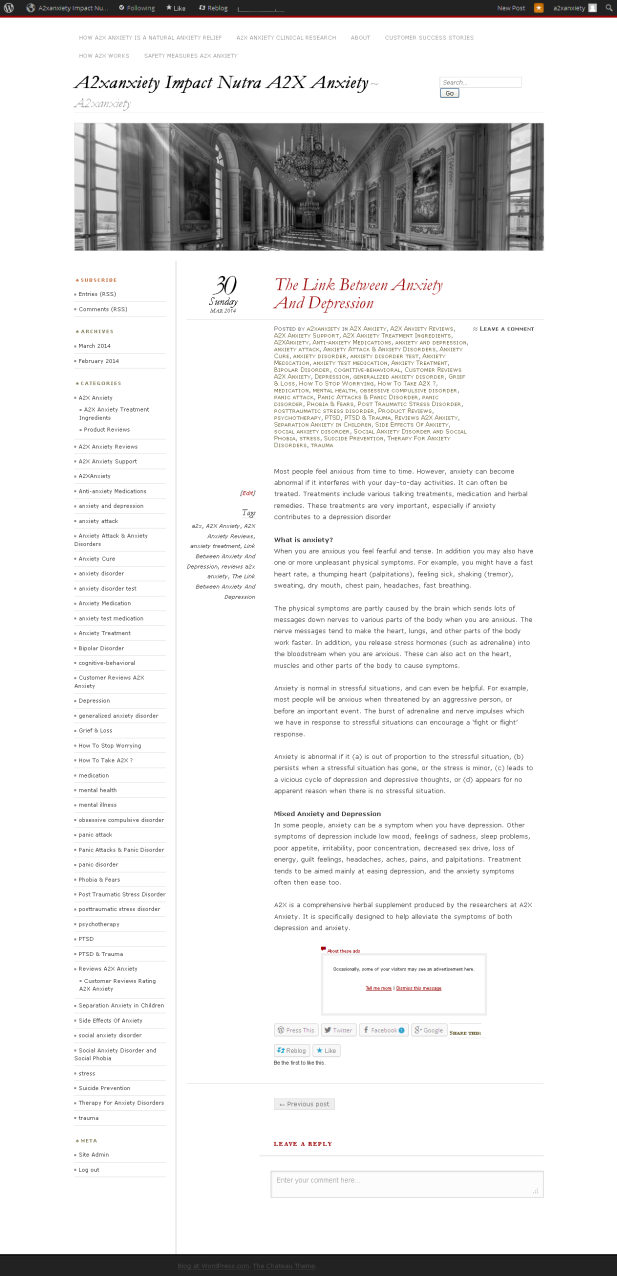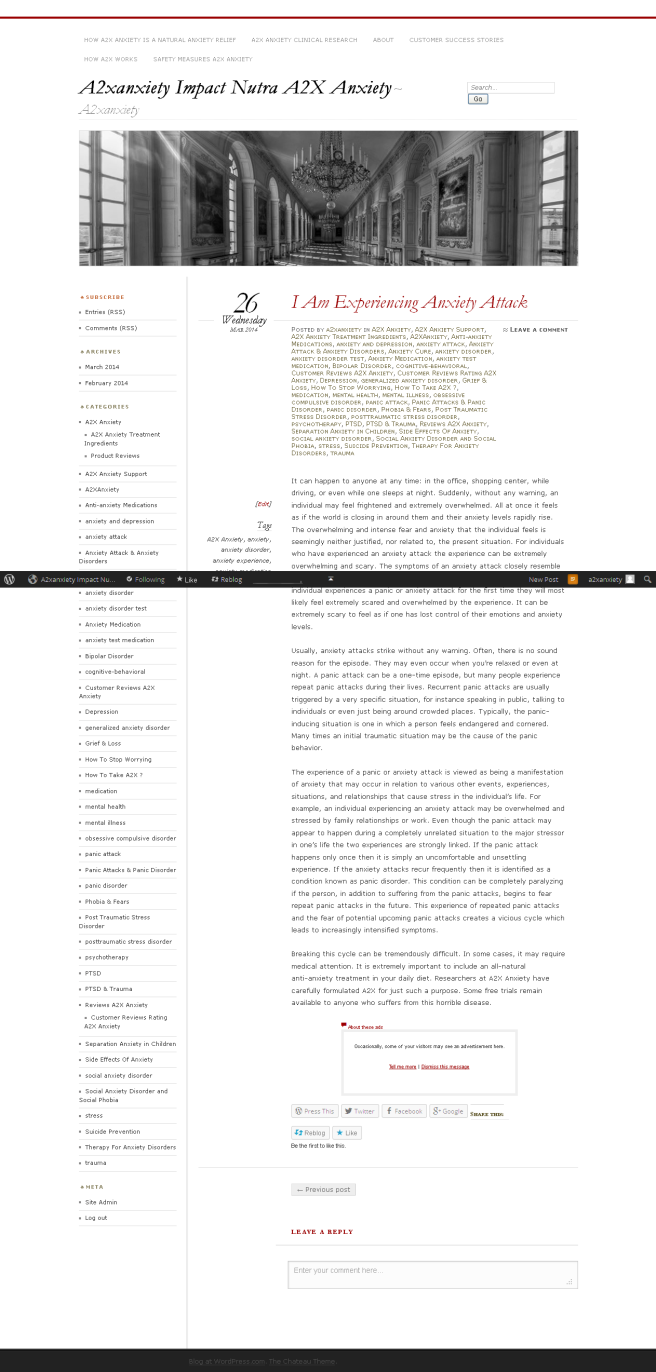Tags
a2x anxiety treatment, anxiety cure, anxiety treatment, How to Overcome Anxiety, overcome anxiety
You enter a large room crowded with strangers. Everyone seems to know somebody except you. You wonder if others can see how anxious you are, how out of place you feel. As you entertain such thoughts, your heart begins to race, and your palms begin to sweat. Your head feels encased in shrink-wrap. You feel an urge to bolt from the room.
Anxiety is part of our natural defensive system – a close cousin to fear. With fear, however, the threat is more readily identifiable. For instance, someone is waving a gun. A dog is barking, crashing against the fence.
Like fear, anxiety is the body’s red warning light that something is amiss. The brain releases adrenaline. The pupils dilate. The heart pumps out blood like an engine on steroids, gearing the body to stand up and fight, or perhaps to run faster than we ever imagined.
A manageable amount of anxiety can actually enhance our performance — by motivating us to prepare for a test, to drive with care, or to gird ourselves for a difficult confrontation. Anxiety also might carry important information. For instance, if I’m anxious at home, it might be helpful to reflect on what’s wrong in order to figure out ways to change it. Perhaps my roommate makes me uncomfortable or maybe I need to have a conversation I’ve been avoiding. The problem, however, is when our anxiety becomes disproportionate to the situation or is so paralyzing that we are unable to perform.
Anxiety is a common feeling usually involving worry about the future. It can range from a vague feeling of uneasiness and discomfort to intense feeling or terror and impending doom. Anxiety produces an increase in various physiological and mental processes. That increase can motivate us to more thoroughly prepare for performance situations like examinations and athletic competition, but it can also become so intense that it interferes with our ability to function normally in every day activities. Constant anxiety may signal an anxiety disorder.
How to overcome and reduce anxiety:
Since some anxiety is natural and normal, the goal of any treatment is not to eliminate anxiety but to lessen it. Some strategies are very simple and easily learned. Other avenues are traversed gradually and entail a process of self discovery, with or without a professional guide.
One way to overcome anxiety is to cultivate feelings and experiences that are incompatible with it. For instance, experiences that build up feelings of self-confidence, well-being, and relaxation offer an antidote to anxiety. Sometimes simple exposure to anxiety-provoking situations can eventually “extinguish” the anxiety response. For example, if you’re anxious among large groups of people, you might seek out more large social situations. Or if public speaking is your bane, take a class that requires frequent class presentations. Nonetheless, sometimes exposure to what makes us anxious is insufficient or too overwhelming, and then other tools may be needed.
Perhaps the first step in addressing your anxiety is to ask: where is my anxiety coming from? By engaging in a process of reflection, sometimes we can figure out what the problem is and then strategize ways to resolve it.
Whatever regimen you follow, it can help maximize the benefits of your strategy by supplementing your diet with a natural aid to the process. The researchers at A2X Anxiety have formulated a compound, A2X, to naturally aid the body’s defense to anxiety. It works with your body and with your regimen to ensure the greatest amount of success in overcoming anxiety, in the shortest amount of time.


